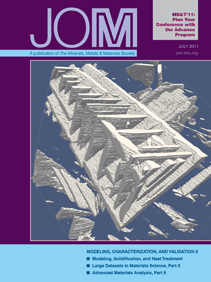VISIT THE
JOM COVER GALLERY
|
|
U.S. Supreme Court Decision Makes it
Easier to Challenge Patent Validity on
the Basis of Obviousness
Arnold B. Silverman
In a recent unanimous decision, the
U.S. Supreme Court overruled a patent
validity holding made by the U.S. Court
of Appeals for the Federal Circuit
(CAFC), with the central issue being
whether the invention as claimed would
have been obvious to one skilled in the
art at the time the invention was made.
The CAFC is the court that hears all
patent appeals from U.S. district courts.
In the case of KSR International Co. v.
Teleflex, Inc., the Supreme Court has
provided another indication that it feels
the CAFC has improperly favored the
patentee in a number of instances.
The three primary statutory standards
of invention in the United States require
that the invention satisfy the utility
standard: that the invention serves a
useful purpose, that the invention is
novel, in that no single prior art reference
discloses the identical invention, and
that the invention must be unobvious to
one skilled in the art, based upon any
single prior art reference or combinations
thereof considered at the time the invention
was made. The KSR case focused
on the obviousness standard.
The subject matter of the patent at
issue in the KSR case related to the newer
type computer-controlled automobile
throttles, which did not require a
mechanical linkage between the gas
pedal and the throttle, but rather relied
on electronic signals. An electronic
sensor translated the mechanical movement
of the pedal into digital data. The
Supreme Court concluded that mounting
a modular center on a fixed pivot point
of a prior-art pedal was a design step
well within the grasp of a person of ordinary skill in the relevant art.
For about two decades, the CAFC had
been employing a standard of obviousness
requiring that the prior art provide
some teaching, suggestion, or motivation
to create the claimed invention before it
would conclude that the prior art rendered
a claim or claims obvious. The
Supreme Court concluded that this
standard was too narrow. It stated that
while the teaching-suggestion-motivation
test might provide helpful insight
for evaluating the issue of obviousness,
it was improper for it to become a rigid
and mandatory formula. The court stated
that advances occur by creating new
works based on instinct, simple logic,
ordinary inferences, extraordinary ideas,
and even genius. These advances, once
part of our shared knowledge, were said
to define a new threshold from which
innovation starts once more. It went on
to say that as progress beginning from
higher levels of achievement is expected,
the results of ordinary innovation are
not the subject of exclusive rights under
the patent laws. Failure to recognize this
would lead to the result that patents
might stifle rather than promote the
progress of the useful arts.
In amplifying its refusal to be enslaved
by the CAFC teaching-suggestion-motivation
test, the court noted several errors
made by the CAFC. The CAFC focused
on prior art that related to the “precise
problem” that the patentee was trying
to solve. The Supreme Court felt that
this was too narrow an approach as the
problem would motivate an inventor to
look more broadly at all of the appropriate
prior art.
The Supreme Court also felt that the
CAFC erred in concluding that the
claimed invention could not be obvious
merely because the prior art would have
made it “obvious to try.”
A further difficulty with the CAFC
opinion was that it was overly concerned
that a patent examiner or fact finder in
court could be biased by the temptation
to employ hindsight to reconstruct the
prior art so as to render an invention
obvious, once the claimed invention was
disclosed. The court concluded that rigid
preventative rules that denied fact finders
recourse to common sense were not
necessary.
What is the net result of this decision?
It will have substantial impact, both in
the prosecution of patent applications
before the U.S. Patent and Trademark
Office and in evaluating validity of issued
patents. The CAFC test which required
teaching, suggestion, or motivation in
the prior art is no longer the deciding
test, but rather is a consideration. The
Supreme Court clearly envisions a
broader test of what is obvious, which
will inevitably lead to greater difficulty
in obtaining overly broad claims in the
U.S. Patent and Trademark Office. The
likely result is that future patents will
have met a higher standard of patentability
and that fewer nuisance patents
of questionable validity will impede
progress of the science and useful arts.
Arnold B. Silverman is a member of the Intellectual
Property Department and a member of Eckert
Seamans Cherin & Mellott, LLC in Pittsburgh,
Pennsylvania.
For more information, contact A.B. Silverman at
Eckert Seamans Cherin & Mellott, LLC, 600 Grant
Street, 44th Floor, Pittsburgh, Pennsylvania 15219
(412) 566-2077; fax (412) 566-6099; e-mail abs@escm.com. |

